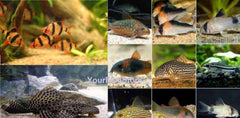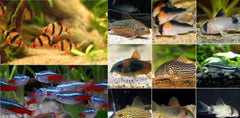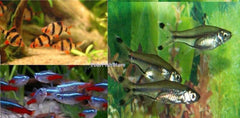x2 Synodontis Valentiana Catfish Sml/Med 1" - 3" Each - Freshwater Fish Free Shipping

The catfish species listed here are some of the most popular among hobbyists. These catfish usually are purchased to perform some sort of function in terms of fish tank maintenance. For example, these fishes are known for their scavenging abilities but they too need their own foods just like the rest of the fish in your tank.
Some stay on the small side (corydoras) whereas others can get quite large (pleco and columbian shark) and some can be aggressive (Chinese algae eater). They are all fascinating in their own right and can be great additions to the right tank setup.+
Catfish can be found in every ecological niche. They are found all over the world, though primarily in fresh water, with the exception of Antarctica. There are some that live in the oceans, though the few catfish that do live in seawater are thought to spawn in brackish water. They are members of a huge order of fish called the the Siluriformes, or ray-finned fish, and there are over 2400 catfish varieties.
Catfish and humans have a very long history. People have fished and farmed them as a food source for hundreds of years in Africa, Asia, Europe, and North America. They are also popular in the aquarium hobby. They are enjoyed for their unique appearance but also as helpful scavengers to clean up left over foods.
Catfish are generally very hardy and easy to keep. Most are also nocturnal, becoming active at night, so they must be fed in the evening hours. Their eyes are small but they are aided in navigation and feeding by chemoreceptors all across their bodies which allow them to taste and smell anything that is in the water or that they touch. Their feeding habits range from plant-eaters and detritivores (those that scavenge on dead matter), to predators. Make sure they are eating since it's hard to tell with many of the armored catfish if they are losing weight.
Be careful when handling catfish since all species have strong, rigid spines on their dorsal and pectoral fins. These spines can pierce the skin and many species have "stings", though most stings are non-venomous. them.
QUESTIONS & ANSWERS
Have a Question?
Be the first to ask a question about this.














